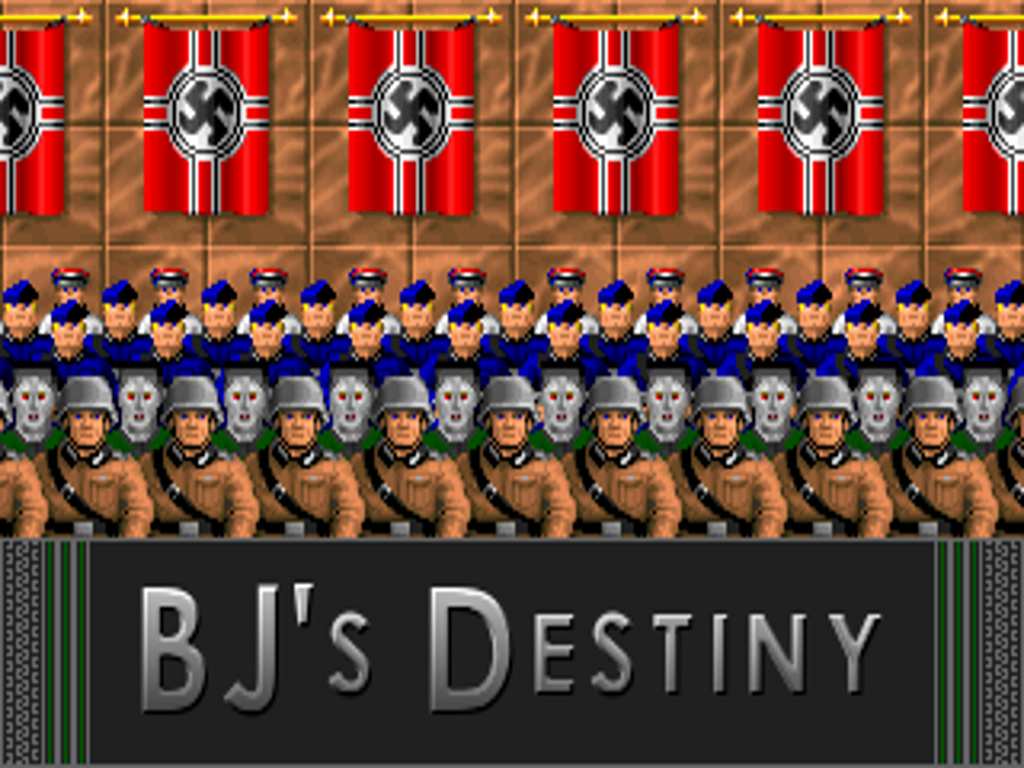

- Wolfenstein 3d map example how to#
- Wolfenstein 3d map example full#
- Wolfenstein 3d map example software#
- Wolfenstein 3d map example Pc#
Despite fan-base claims, the Amiga definitely does NOT lend itself to video. You can make a similar argument about MPEG. If your hardware provides sprites and tiles and has no 3D transforms and a weak processor then it is inevitable that you will soon see 2D tile-based sprite games appearing on it.
Wolfenstein 3d map example software#
What you also ignore is for any hardware platform certain kinds of software design “fall out of” the system. Time is definitely NOT immaterial in software development. you cannot just set aside the tractability of the problem as if it is immaterial. There is a very good change that none of the best ways of doing it have even been discovered. Imagine what I do when I’m programming: “If there were an omniscient programmer who could know every possible permutation of algorithm, which would have the best effect”? Imagine what *might* appear on a Sinclair Spectrum in 100 years if many very clever people with mathematics backgrounds worked on new methods? The Sinclair Spectrum would probably be able to do things we never thought possible if people searched for new algorithms and techniques for an eternity.
Wolfenstein 3d map example how to#
whether it was possible or not, NOBODY FIGURED OUT HOW TO DO IT UNTIL WAY, WAY AFTER IT WAS TOO LATE TO MEAN ANYTHING. “It’s just that nobody figured out how until recently”.Įxactly…. Great how the very last sentence torpedoes everything else you wrote before it: It’s just that nobody figured out how until recently. It gives you a good idea of how you have to completely re-think the whole renderer and storage of the data, to make it run efficiently on the Amiga. Britelite discussed the technical details of what became Cyberwolf in a thread over at the English Amiga Board. If you look closely, you’ll see that they have a ‘distinct’ look because of the way the rendering is performed.
Wolfenstein 3d map example Pc#
All it took was to stop thinking in terms of the PC renderer, and making poor conversions of the x86/VGA-optimized routines on Amiga hardware, but instead to develop Amiga-optimized routines directly. So… all these years later, we can now finally prove that the Amiga indeed CAN do Wolfenstein 3D. So it is more of a Wolfenstein 3D++ engine (or a DOOM– engine).Īnd the performance is very good, even on a stock Amiga 500. But it does offer various other features over Wolfenstein 3D, such as the skybox and the lights and shadows. And it does not support height differences in levels either. Here is an excellent overview of how Wolfenstein 3D evolved:Īs you can see, it’s not *quite* like DOOM, in the sense that there are no textured floors and ceilings. The game itself was also refined, and now had just the right look-and-feel to become a true milestone in gaming.
Wolfenstein 3d map example full#
The big advantage was that you could now use the full 256 colours, which made for more vibrant textures and level design. The developers figured out that the EGA trick of rendering scaled vertical columns works nearly the same in the newly discovered ‘ mode X‘ of VGA. You use raycasting to determine the distance from the player to the nearest visible wall, and then render a texture-mapped version of that wall by rendering scaled vertical columns based on the distance, with perspective projection.Ĭatacomb 3-D was a good first step, but the game still felt rather primitive, with the limited EGA palette, and the gameplay not quite having the right speed and feel yet.īut only a few months later, in May 1992, id Software released the successor, where everything really came together. By taking a simple 2D-map with walls, and performing raycasting from the player’s position in the viewing direction, you can make a simple perspective projection of the walls. But it is also good at rendering vertical columns of pixels.Īnd that is the key to having fast texture-mapped 3D walls. We’ve already seen that it is fast at filling large areas with a single colour, for polygon rendering for example. But id Software saw that EGA’s quirky bitplane layout and ALU meant that it was relatively good at certain things. The PC was not very good at action games, because it had no hardware sprites, and scrolling was very limited.

This game made use of the power of the 16-bit 286 processor, which was starting to become mainstream with PC owners, and the EGA video standard.


 0 kommentar(er)
0 kommentar(er)
